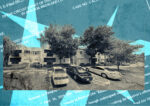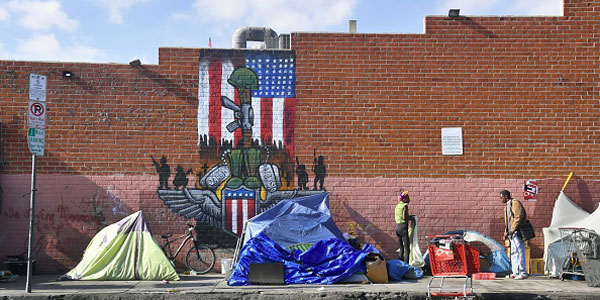A proposed homeless shelter is threatening to upend Koreatown’s development momentum.
As far back as 2013, when office landlord-turned-residential developer Jamison Services leased the Westmore, a 127-unit luxury apartment building, the formerly blighted neighborhood – the site of rampant looting and vandalism after the 1992 LA riots – has become a trendy spot for new hotels, apartment complexes and retail outlets.
But a new program Mayor Eric Garcetti announced last month to provide emergency housing to over 25,000 homeless residents in Los Angeles is causing an uproar among residents and making some developers nervous, real estate professionals told The Real Deal.
The program, called “A Bridge Home,” would ease some of the regulatory limitations for building shelters, allowing them to pop up atop city-owned land, such as trailers in public parking lots.
Koreatown, where the homeless issue has become particularly acute, will be the first neighborhood in the city to erect a shelter. Some 400 people in Koreatown are living on the streets in nearly 70 encampments. City officials have touted the 65-bed shelter as a “pathway” to getting people off the street while the city builds permanent housing.
In Venice, a similar attempt by city officials caused so much resident upheaval it ultimately led to a secession effort, nicknamed “Vexit.” Although now stalled, it showed how far residents and neighborhood groups would fight before conceding to homeless housing projects.
For his part, Garcetti is under pressure to come up with solutions to the city’s housing crisis. Since 2013, his first year in office, the number of homeless residents in Los Angeles has grown by 49 percent, according to the Los Angeles Homeless Services Authority.
The city has already proposed facilities in South L.A., Hollywood, Westwood, Studio City, Valley Village, North Hollywood, Van Nuys and Chinatown, according to a spokeswoman at the mayor’s office.
The mayor said he would be dedicating $20 million of his proposed 2018-19 budget to fund the new facilities. They’re expected to add about 1,500 beds spread across all 15 council districts.
Koreatown’s Rebirth
After the chaos and pain of the riots some 25 years ago, Koreatown, which is home to a diverse group of cultures, slowly rebounded. In recent years it attracted developers seeking to benefit from the city’s recently enacted Transit Oriented Communities program.
In the past three years, median asking rents in Koreatown for active listings have risen over 22 percent to $1,650 a month for a one bedroom unit, according to data from Zumper.
In addition to the Westmore, Jamison is nearing completion at several other nearby projects, including a 209-unit residence with 3,100 square feet of ground-floor retail; and a 202-unit adaptive reuse project with room for community space.
Other developers followed Jamison’s lead. Harridge Development Group is building a 160-room hotel and 555-unit apartment complex at the Wilshire Galleria complex. Vancouver-based Bastion Development is planning a 114-unit apartment complex with 3,550 square feet of retail. An Irvine-based developer has proposed an 89-unit condominium building.
But the announced shelter is already causing friction with residents and business owners in Koreatown, many of whom have come out in droves to protest the proposal.
Protesters have argued the shelter’s close proximity to schools and the busy Wilshire/Vermont subway station would negatively impact the neighborhood, and only attract more homeless to the area, the Los Angeles Times reported.
Real estate professionals, meanwhile, have mixed opinions.
John Kostrey, a former Koreatown resident of 10 years and a broker at Nourmand & Associates, said it could potentially unwind the last decade or so of development in the area.
“Koreatown is finally starting to attract residents and developers from other areas, so plucking a shelter there now has the potential to do a real setback,” he said.
Jeff Weller, managing principal at Lion Real Estate Group, said it could negatively impact the community. “If you look at Skid Row and 6th Street, where the majority of homeless shelters are today, those areas have become war zones,” he said, referring to Downtown.
After spending 10 years developing over 1,000 residential units in Koreatown, the development firm recently sold all of its assets in the neighborhood. Weller denied it had anything to do with homelessness, saying Koreatown became “overbought.” The firm chose instead to invest in other pockets of L.A. like Echo Park and the Arts District.
Others, such as Ricardo Pagan from Claridge Properties, didn’t foresee the shelter impacting the development pipeline.
“Even though it does affect the neighborhood, people are going to have to come to the reality that there are going to be homeless people there,” he said. “They’re not building homeless shelters just to kill the area — they’re going to house them so they’re not on the street.”
Claridge is currently developing the massive Angels Landing site in Downtown, located just blocks away from two homeless shelters. “We’re building, anyway,” Pagan said.
A Koreatown broker, speaking on the condition of anonymity, said the shelters could make Koreatown “look more attractive without as many homeless people in the area.”
The city is vowing to design structures that are not eyesores.
“People are afraid that it’s going to be this horrible scary thing,” said Clare De Briere, chair of the Urban Land Institute’s District Council, Urban Land Institute’s District Council, which is helping the mayor’s office with the shelters and which recently published a homeless report with recommended actions. “These structures can be absolutely beautiful, and so we’re going to show examples of how that would look.”




